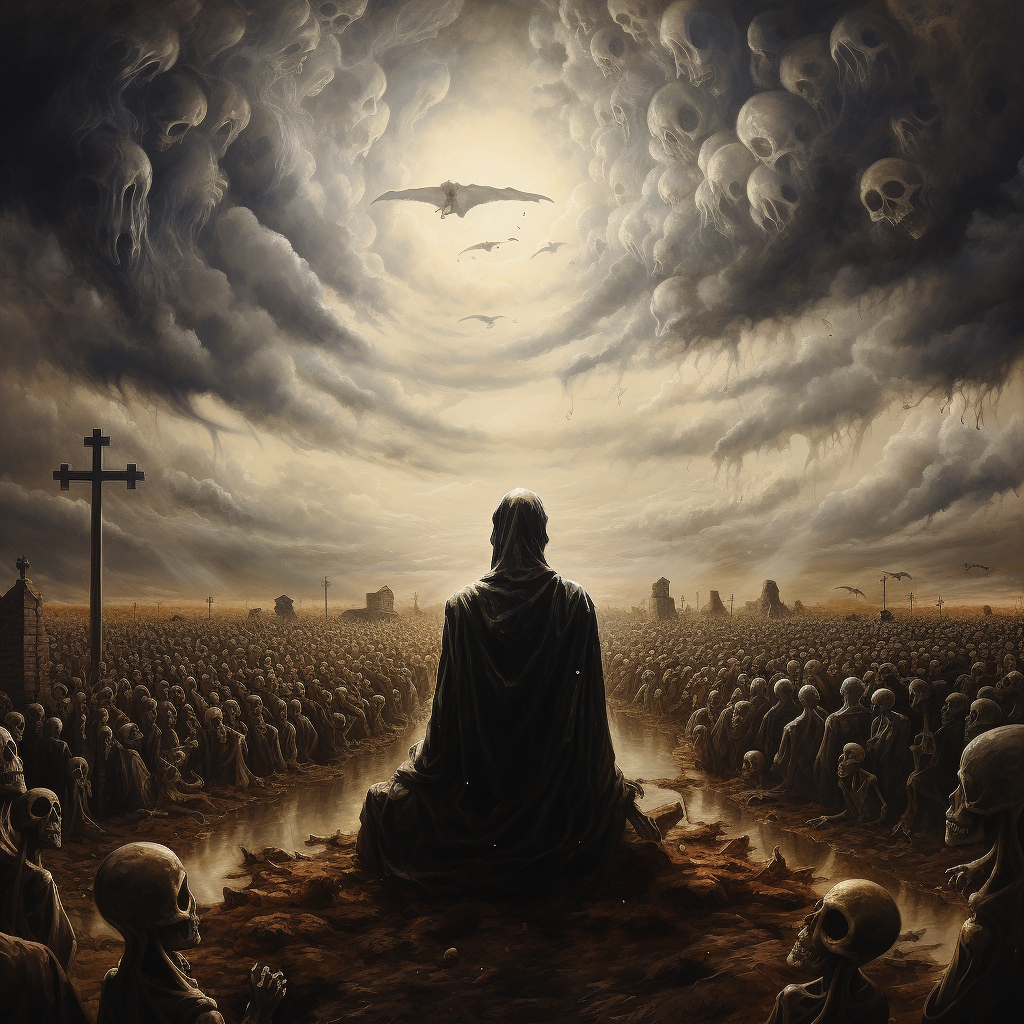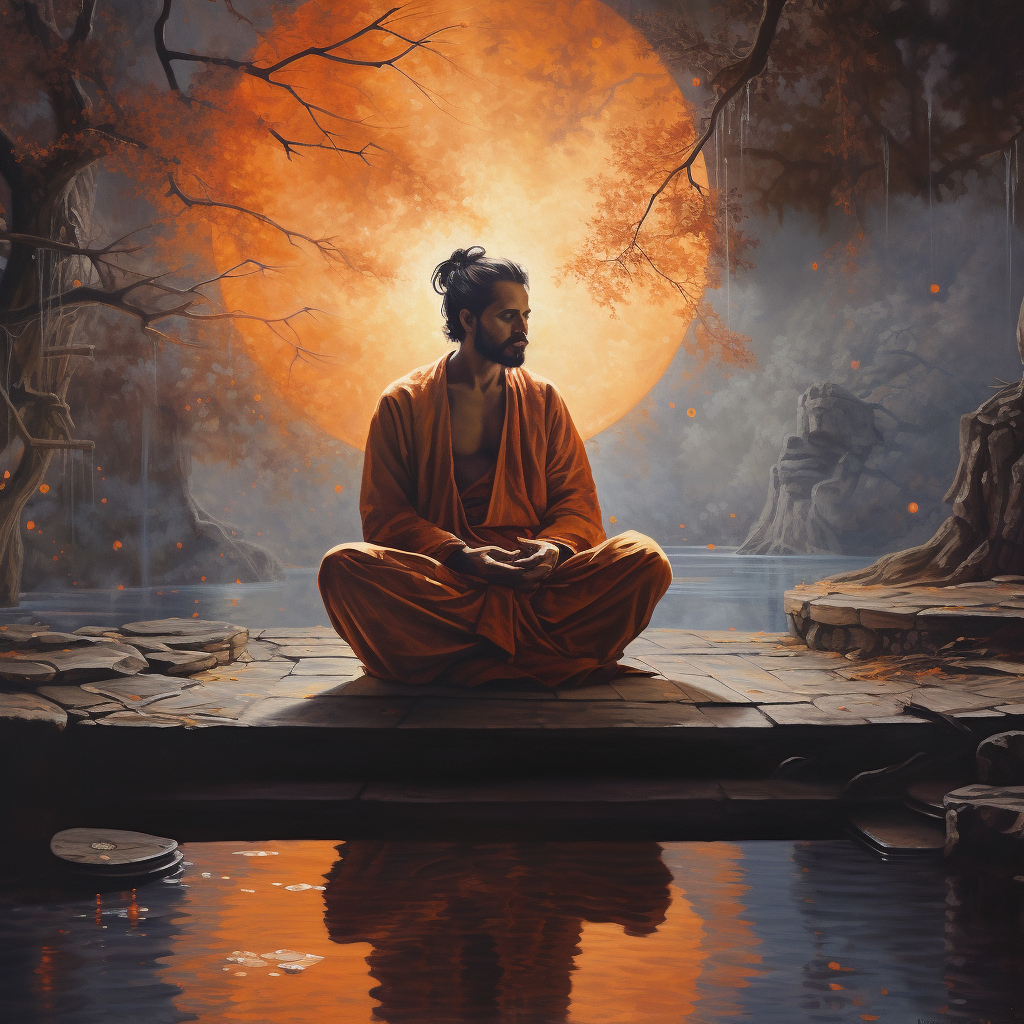A Lamrim meditation on the transient nature of existence and the importance of abandoning attachments.

Intellectually, we all know we are going to die. Our instinct is to survive, so the fact of certain death makes most people uncomfortable, and they push it away. Death is considered a downer.
Western culture shields us from death. We only face death when we visit a funeral home, or perhaps drive by a cemetery. Dead bodies are mostly shielded from our sight, to aid in our denial of its inevitability.
The tendency to shun death is unfortunate because meditating on death can be very motivating. When I deeply internalized the reality of death, it gave me a deeper appreciation of my precious human life, and it motivated me not to waste it.
See: Tibetan Buddhist Lamrim: Your Precious Human Life
Death
The Tibetan Buddhist Lamrim teachings on death and impermanence are fundamental aspects of the spiritual path. People who deny death and believe their wealth, status, and possessions are permanent suffer due to their attachments.
Death is something to embrace, not deny.
The summary below is based on Lamrim’s teachings with an emphasis on why these teachings are important and how we could apply them to our lives.
- Impermanence (Anitya): Everything in the phenomenal world is impermanent. Nothing lasts forever, and all things, including ourselves, undergo constant change. Recognizing impermanence helps us avoid attachment to fleeting pleasures and possessions.
- The Time of Death is Uncertain: Death could happen at any moment, and we have no control over it. Contemplating this uncertainty motivates us to make the most of our time and prioritize that which is most important.
- Death as a Natural Process: Tibetan Buddhism views death as a natural process, not an endpoint but a transition. Christians believe the transition is from life to heaven (hopefully not hell). Understanding that the process is natural and transitions to something new can reduce the fear of death and help us face it with equanimity and peace of mind.
- Life’s Shortness: The teachings emphasize the brevity of life in the grand scheme of things. Our existence is like a fleeting moment in the vastness of time. This realization encourages us to use our time wisely.

- Karma and Rebirth: Lamrim’s teachings connect the concept of death to the law of karma (cause and effect) and the cycle of rebirth. Our actions in this life influence our future lives, motivating believers to engage in virtuous actions and purify negative karma. Christians have concepts of heaven and hell to motivate virtuous behavior in this life, too.
- Spiritual Preparation: Knowing that death is inevitable, we should prepare for it spiritually. This involves cultivating positive qualities, such as compassion, wisdom, and loving-kindness, and purifying negativities through practices like meditation and confession.
- Moment of Death: Contemplating the process of dying and the moment of death is a common practice in Lamrim. It encourages us to face our fears of mortality with awareness and inner peace.
- Living Mindfully: Practicing mindfulness of death and impermanence in our daily lives helps us stay grounded and make conscious choices. It reminds us not to take life for granted and to cherish the present moment.
- Compassion and Help for Others: Lamrim’s teachings also emphasize the importance of helping others prepare for death, providing comfort and guidance to those who are dying, and practicing compassion in the face of mortality.
In summary, the Tibetan Buddhist Lamrim teachings on death and impermanence highlight the ephemeral nature of life, encouraging us to live mindfully, prepare for death, and prioritize spiritual growth. These teachings serve as a reminder to make the most of our precious human life by cultivating positive qualities and letting go of attachments to worldly concerns.
See: You Are Going to Die
Impermanence
Anitya, also known as “impermanence,” is a fundamental concept in Buddhist philosophy and spirituality. It refers to the universal truth that all things arise in dependence on causes and conditions.
Everything arises, exists for a time, and eventually passes away. This impermanence applies to both physical entities and mental states.
Change is the fundamental reality, and time is a byproduct of change. All events, processes, and phenomena involve some form of change, whether it’s the motion of objects, the aging of living beings, human relationships, or the unfolding of historical events.

When individuals become attached to or cling to impermanent phenomena, they experience suffering because they inevitably face separation or loss.
By being fully aware of the ever-changing nature of their experiences, practitioners can cultivate greater wisdom and equanimity.
Understanding and accepting impermanence is a crucial step toward this liberation because it leads to a detachment from worldly attachments and desires.
A musical meditation on death and impermanence
I close my eyes
Only for a moment and the moment’s gone
All my dreams
Pass before my eyes, a curiosity
[Refrain]
Dust in the wind
All they are is dust in the wind
[Verse 2]
Same old song
Just a drop of water in an endless sea
All we do
Crumbles to the ground though we refuse to see
[Refrain]
Dust in the wind
All we are is dust in the wind
[Verse 3]
Now, don’t hang on
Nothing lasts forever but the earth and sky
It slips away
And all your money won’t another minute buy
Meditation on death and impermanence
In Tibetan Buddhist meditation practices, including Lamrim meditations, there are typically two essential components: contemplation and the object of meditation.
The long form of the contemplation is the post above. If you listened to Dust in the Wind, you probably felt feelings of futility for chasing worldly pleasures and attainments, those feelings are close to the virtuous object you are looking for.
The New Meditation Handbook from Tharpa Publications, written by Geshe Kelsang Gyatso, is the source I use for any traditional meditations I discuss in these posts.
The virtuous objects that emerge from this meditation come in two parts, as explained below.
I am not quoting him directly. I offer a concise paraphrase of his instructions. I suggest you consult the handbook for instructions from a true Buddhist master.

Contemplation
Consider what you read in this post and focus on the following first-person narrative:
I am going to die, and I have no idea when it will happen.
Some people die young. Some people die unexpectedly and suddenly. There are many ways to die, and no insurance against an untimely death.
Every day, my life slips away. Every day I spend pursuing worldly concerns is a day wasted, never to be recovered.
I may die today. I should be prepared for that.
Object of Mediation
The first object of meditation is the feeling that “I may die today.” Repeat it like a mantra, over and over again, until the message really sinks in.
Eventually, a second feeling will arise, the futility of attaching yourself to any worldly object—the realization that you are dust in the wind.
When the second feeling arises, you then form the determination not to waste your life pursuing worldly objects, and like the Precious Human Life Meditation, you decide, “I will make the most of my life, improve my self-discipline, and work toward the benefit of others.”
